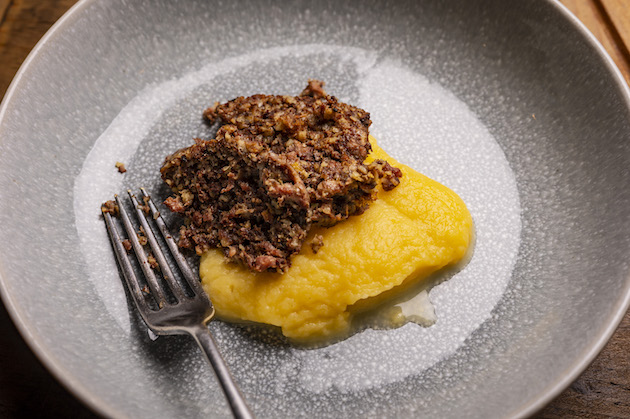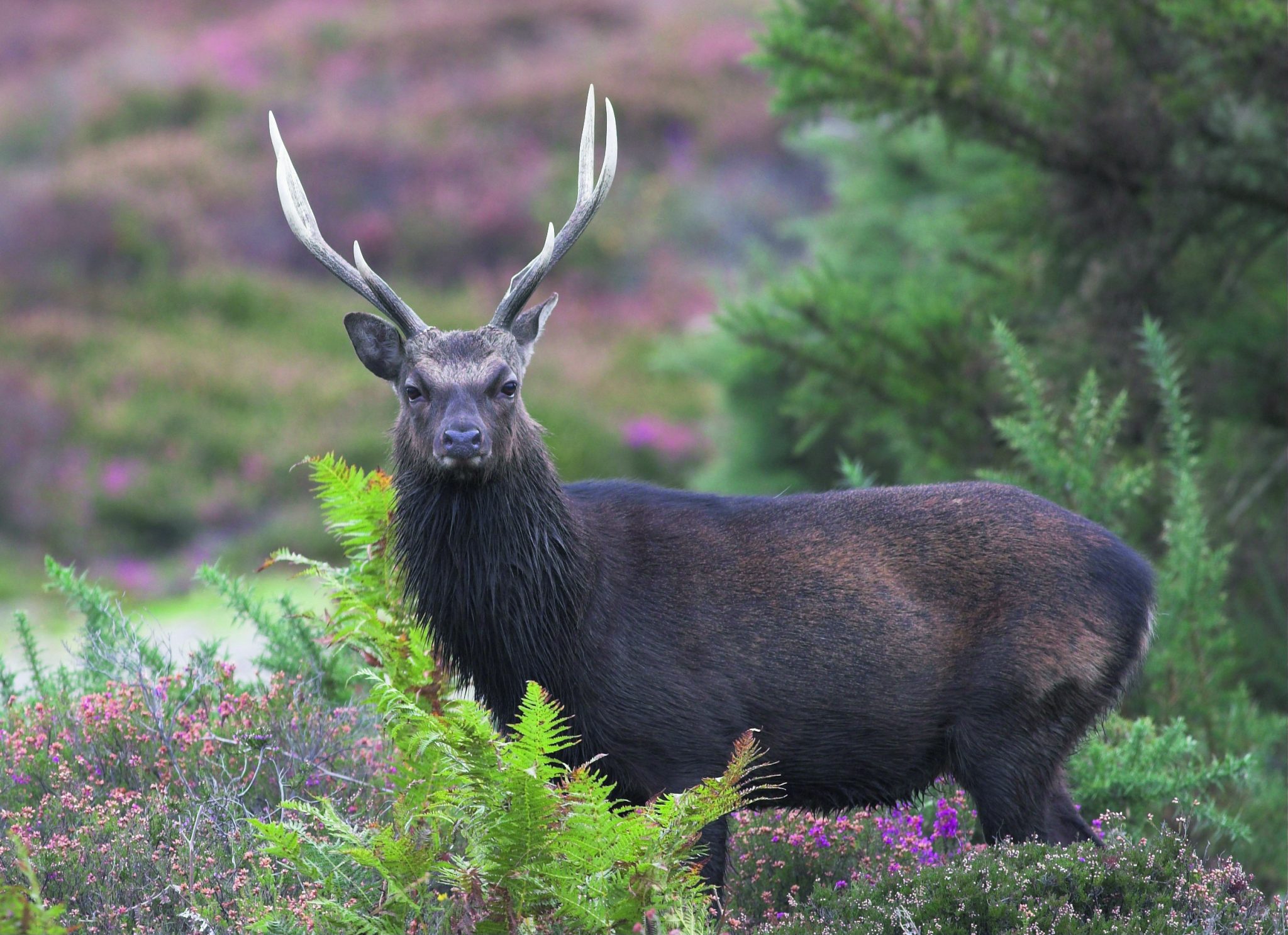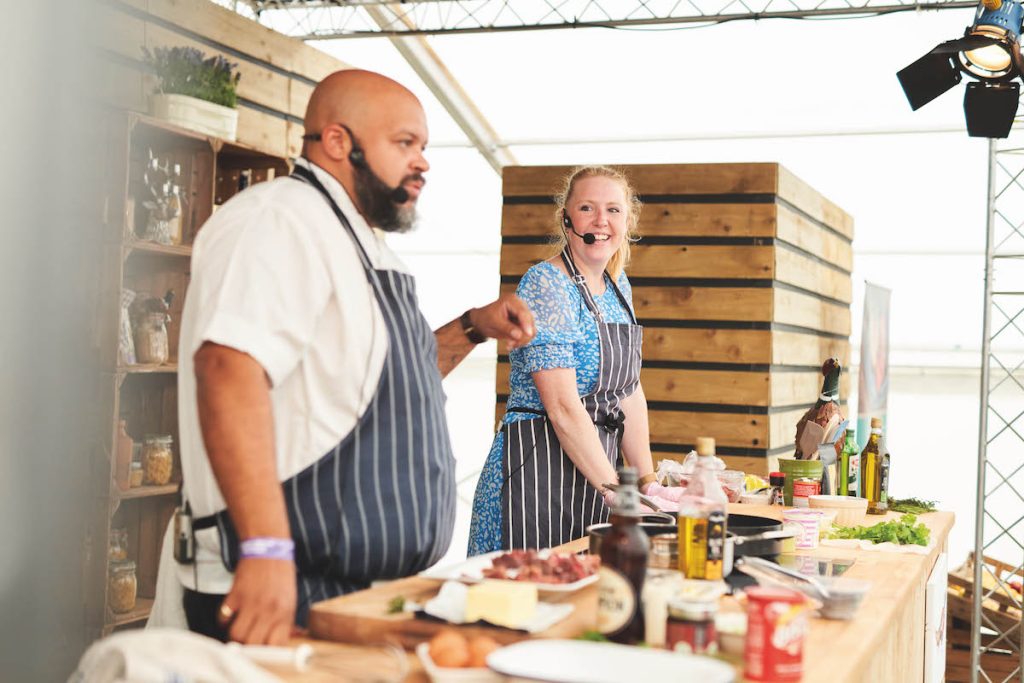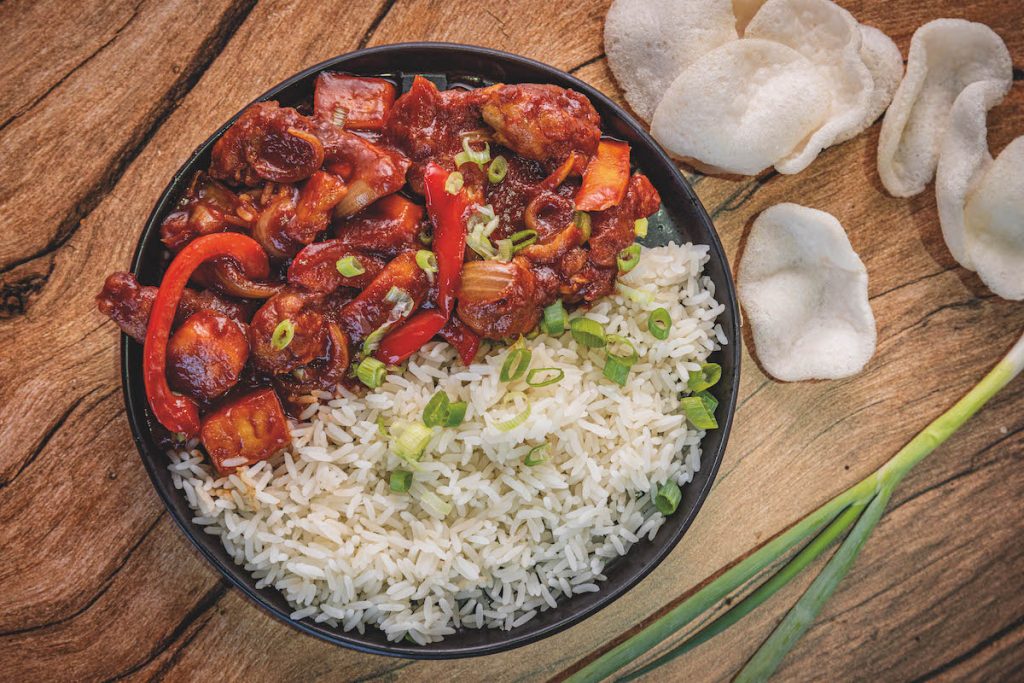Recipes
A recipe for pheasant haggis
Would you like to speak to our readers? We offer sponsored articles and advertising to put you in front of our audience. Find out more. Pheasant Haggis
Pheasant Haggis
Since moving to sunny Scotland last year, all things haggis have been on my radar so here is my recipe for pheasant haggis. While it is by no means a traditional haggis, it is certainly a wonderful thing to do with late-season pheasant thighs and offal — especially when served up with a neep (swede) puree and a dram of the good stuff. (You might also like to see our recipes for venison haggis and rabbit haggis.)
Recipe for pheasant haggis
Ingredients
- 200g pheasant heart and liver
- 400g boneless and quite fatty pheasant thigh, diced
- 200g pinhead oats or rolled oats
- 1tsp coriander seeds
- 1tsp dried green or black peppercorns
- 1tsp fennel seeds
- 1tsp ground mace
- A sprig of fresh thyme
- 8g salt
- 1 medium onion, very finely chopped
Equipment requirements
You will need a mincer. If you have a sausage stuffer and can get some ox-middle casings, excellent, or you can hand-stuff into an ox bung.
If you can’t be doing with all that, the haggis mix can be cooked in a cling film-lined terrine mould. If you do this, don’t bother with poaching the haggis in the pheasant stock, simply poach in water or bake in a low oven in a water bath. You will also need some butcher’s string, if using ox-middle casings.
Timing
It doesn’t take very long to mince, season, cook a little to test seasoning and stuff into the chosen container for cooking — 30 minutes should cover it. Cooking time is around 90 minutes, depending on how big the haggis is. I made it quite narrow in an ox-middle casing and it took around 50 minutes.
Method
- The first job is to mince the offal and all of the diced leg meat. I tend to do this on a medium mincer plate, so that it’s not too smooth. If you are using jumbo oats, it may be best to give them a quick whizz in the food blender to chop them up a bit smaller.
- Toast the coriander seeds, green or black peppercorns and fennel seeds before crushing in a spice grinder or a pestle and mortar.
- Add the ground mace. This creates the seasoning mix that, along with the thyme and salt, will be used to flavour the haggis. I had to try very hard not to add garlic and a reduction of some sort. Perhaps I will next time, probably with a little stock and some cider reduced to a syrup, plus two cloves of finely chopped garlic.
- Mix together the oats, onion, thyme and the minced meat and offal. Season well with the spice mix and add most of the salt. Mix the haggis mixture together well.
- At this point, there is a decision to be made about whether to have the haggis coarse or fine. If you decide to go for fine, put the whole show back through the mincer again.
- Next, place a dessertspoonful in a hot frying pan with a knob of butter and allow it to cook over a moderate heat. Taste it and adjust the seasoning as required. Add more salt and/or spice mix if you think it needs it.
- Either fill a sausage stuffer and pipe the mix into a length of ox middle, or line a terrine mould with three layers of cling film and place the mixture in that before wrapping and then rewrapping in foil.
- Take care when filling the sausage skin not to overfill it. If the skin is too tight, the haggis will burst in the pan as it simmers. I used about 1ft of ox middle and, once filled, I tied it off into three roughly equal lengths using some butcher’s string.
- Ideally, leave the haggis in its casing uncooked for a few hours in the fridge to allow things to settle and gel together nicely and for the flavour to intensify. This will help to prevent it bursting during cooking.
- In a large pan, put enough water to immerse the haggis. Bring it to a gentle simmer, salt the water and add the haggis.
- Cover with a lid and cook on a low simmer for around an hour and a half. Alternatively, simmer in a pheasant stock for added unctuousness. If using the terrine-mould method, this will need around one and a half hours at about 120°C.
- Allow the oven and the water bath time to get up to temperature before adding the terrine and starting the timer.
- Once the cooking time has elapsed, remove the haggis from its cooking liquid. If using stock, retain this for making gravy at a later date, or splash a little of over the haggis when serving.
- Once cooled, the haggis should keep for four or five days in an airtight container in the fridge. It is delicious fried and added to a few eggs for breakfast. It will also freeze well after cooking and this is best done in a vacuum-pack bag or well wrapped. Well wrapped or packed, it should keep in the freezer for more than six months, but is best used within three.
A note on this recipe for pheasant haggis
I never stop challenging myself to think of new ways, or at least different ways, to use up game meat. I am very lucky because, even though I shoot a bit, I live in a place where game is often available for the asking from the local shoot. That is doubly handy as, this season, I can’t seem to find my backside with both hands, let alone a curling pheasant at 40 yards.
It’s a curious thing, the abundance of game at this time of year. It can lead to a sort of boredom with eating pheasant and it can certainly lead to a tendency to treat the birds with less thought and respect than is due. I am an advocate of eating as much as is practical of any animal that has died to feed you and this takes us on to the sticky issue of offal.
As the season for pheasant progresses, the birds toughen up somewhat. This means we are better to leave them off the roasting list and add them to the ‘to do other things with’ list. In my house, this often means that I don’t pluck the birds, I simply skin them, remove the breast and leg meat, separate the thighs from the drumsticks and bone them.
Rather neatly, this leaves me with: drumsticks and thigh bones for making stock; breasts for myriad uses — often they will get cold smoked and frozen for later use — boneless thighs for mincing, currying or stewing. And you could be forgiven for thinking that’s pretty much it — but what of the delights within? A simple stroke of the knife along the keel bone from the bottom end towards the wishbone will reveal the glistening red and robust liver and heart, both of which can be simply plucked out without disturbing the more noisome innards. This will result in a small, but useful amount of pheasant offal.
If the liver has discoloured or been shot through, discard it. The same applies to the heart. But if they are both red, fresh and untainted, there is no reason to avoid them. In fact, they are delicious. I often marinate the hearts in a little miso paste and water before grilling directly on a hot plate and serving with a soy dip and toasted sesame seeds. The livers often get the devilling treatment or find their way into pâtés and terrines — also delicious.
Related articles
Manage Consent
To provide the best experiences, we use technologies like cookies to store and/or access device information. Consenting to these technologies will allow us to process data such as browsing behavior or unique IDs on this site. Not consenting or withdrawing consent, may adversely affect certain features and functions.
Functional Always active
The technical storage or access is strictly necessary for the legitimate purpose of enabling the use of a specific service explicitly requested by the subscriber or user, or for the sole purpose of carrying out the transmission of a communication over an electronic communications network.
Preferences
The technical storage or access is necessary for the legitimate purpose of storing preferences that are not requested by the subscriber or user.
Statistics
The technical storage or access that is used exclusively for statistical purposes.
The technical storage or access that is used exclusively for anonymous statistical purposes. Without a subpoena, voluntary compliance on the part of your Internet Service Provider, or additional records from a third party, information stored or retrieved for this purpose alone cannot usually be used to identify you.
Marketing
The technical storage or access is required to create user profiles to send advertising, or to track the user on a website or across several websites for similar marketing purposes.





